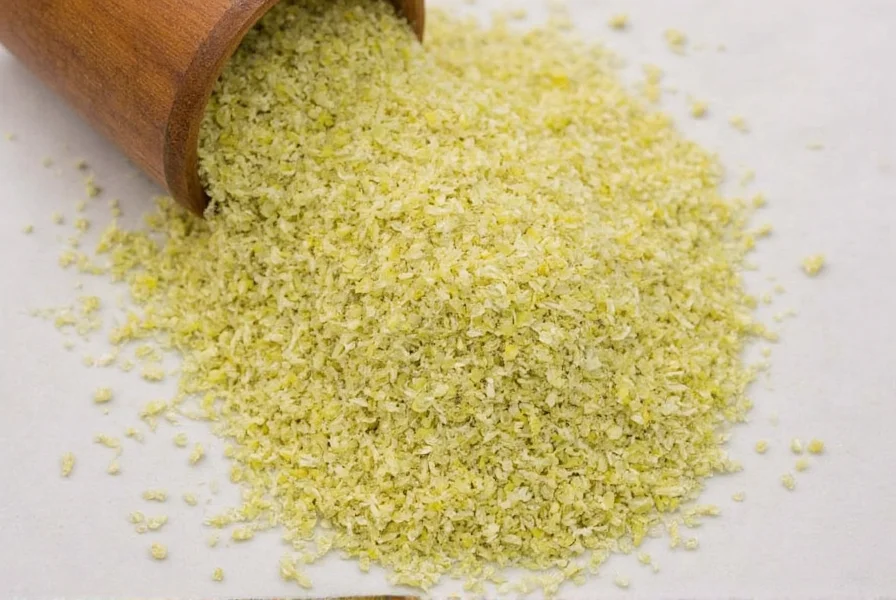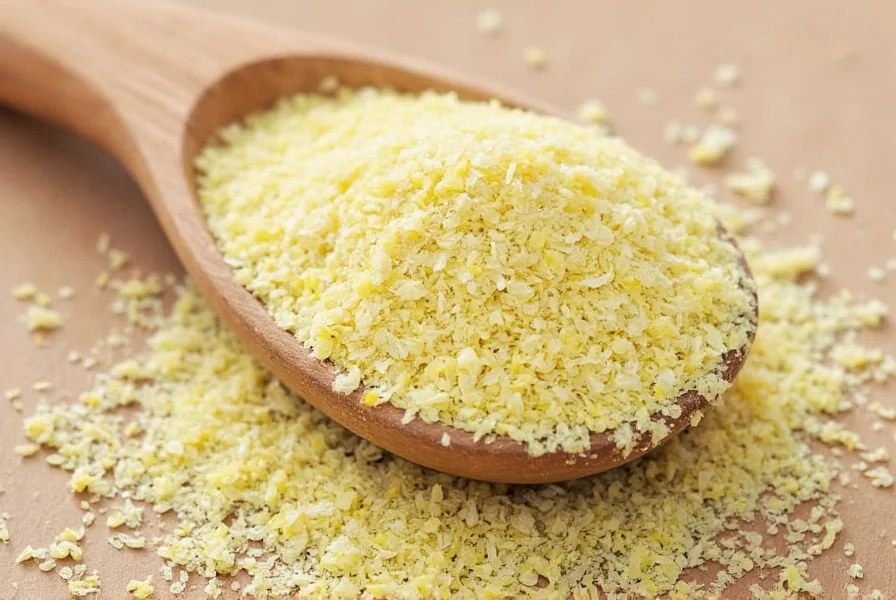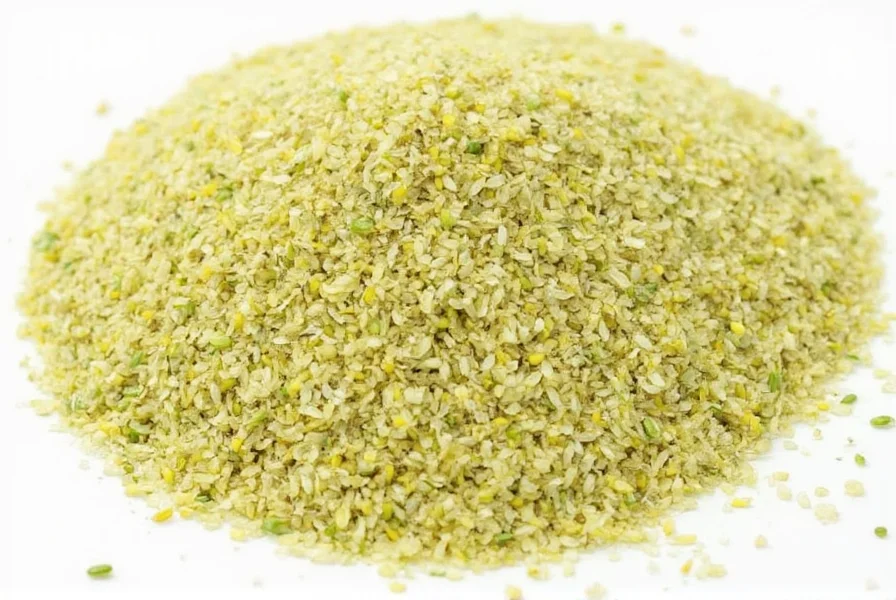Understanding ground fennel begins with recognizing its botanical origins. The fennel plant, native to the Mediterranean but now cultivated worldwide, produces small oval seeds that transform into a potent spice when dried and ground. This process releases essential oils containing anethole, the compound responsible for fennel's distinctive flavor profile that ranges from sweet to subtly earthy depending on terroir and processing methods.
What Makes Ground Fennel Unique
Ground fennel differs significantly from its whole seed counterpart in both application and flavor release. When fennel seeds are ground, their essential oils become immediately accessible, creating faster flavor infusion in dishes compared to whole seeds which require toasting or prolonged cooking to release their full potential. This characteristic makes ground fennel particularly valuable in dry rubs, spice blends, and quick-cooking applications where time doesn't allow for whole seeds to properly bloom.

Culinary Applications Across Global Cuisines
Chefs worldwide leverage ground fennel's versatility across diverse culinary traditions. In Italian sausage making, it provides the characteristic flavor in finocchiona and other cured meats. Indian cuisine incorporates it into garam masala and curry powders, while Middle Eastern recipes use it in baharat spice blends. Mediterranean bakers add it to breads and biscotti for subtle sweetness, and American barbecue enthusiasts include it in dry rubs for pork and poultry.
| Cuisine | Common Uses | Flavor Pairings |
|---|---|---|
| Italian | Sausages, breads, fish dishes | Lemon, garlic, oregano |
| Indian | Curry powders, lentil dishes | Turmeric, cumin, ginger |
| Middle Eastern | Dukkah, baharat, stews | Cumin, coriander, sumac |
| American | BBQ rubs, coleslaw, pickling | Paprika, mustard, brown sugar |
Nutritional Profile and Evidence-Based Benefits
Nutritionally, ground fennel packs significant value in small quantities. A single tablespoon (6g) provides approximately 20 calories, 2g dietary fiber, 10% of the daily recommended manganese, and notable amounts of iron and calcium. Research published in the Journal of Food Science and Technology confirms fennel's antioxidant properties, while studies in Phytotherapy Research document its traditional use for digestive support.
Unlike many spice claims that lack scientific backing, ground fennel demonstrates measurable benefits for digestive health. Clinical trials indicate that fennel compounds can reduce intestinal spasms and improve symptoms of irritable bowel syndrome. The spice also shows promise for lactating mothers, with research suggesting it may increase milk production when consumed regularly.
Practical Cooking Guidance
When incorporating ground fennel into recipes, understanding proper measurement and timing proves crucial. As a general rule, use one-third the amount of ground fennel compared to whole seeds since grinding concentrates the flavor. For optimal results, add ground fennel early in the cooking process for soups and stews to allow flavors to meld, but incorporate it later in dry rubs or finishing salts to preserve its aromatic compounds.
Storage significantly impacts ground fennel's shelf life and potency. Keep it in an airtight container away from light and heat, where it maintains peak flavor for 6-12 months. Whole seeds stored similarly last up to two years, making them a more stable pantry option if you don't use fennel frequently. For maximum freshness, consider grinding your own fennel seeds as needed using a dedicated spice grinder or mortar and pestle.

Substitution Strategies and Common Mistakes
When substituting ground fennel, understand that no single spice perfectly replicates its complex flavor profile. Anise seed provides similar licorice notes but lacks fennel's citrus undertones, while dill seed offers earthiness without the sweetness. For Mediterranean dishes, a 50/50 blend of anise and coriander often works best, while Indian recipes might benefit from combining cumin with a touch of star anise.
Cooks frequently make two critical errors with ground fennel: using too much (its flavor intensifies quickly) and adding it too late in cooking (preventing proper flavor integration). Remember that ground fennel's potency means a little goes a long way—start with 1/4 teaspoon per serving and adjust to taste. When experimenting with unfamiliar recipes, consider making a small test batch before committing your entire dish to ensure proper flavor balance.
Frequently Asked Questions
Can I substitute ground fennel for whole fennel seeds?
Yes, but use one-third the amount of ground fennel compared to whole seeds. For example, if a recipe calls for 1 teaspoon of whole fennel seeds, use 1/3 teaspoon of ground fennel. Remember that ground fennel releases flavor more quickly, so add it earlier in the cooking process than you would whole seeds.
Does ground fennel help with digestion?
Clinical research supports fennel's traditional use for digestive health. Compounds in ground fennel can reduce intestinal spasms and improve symptoms of irritable bowel syndrome. Many people find relief from bloating and gas by consuming fennel tea or incorporating small amounts of ground fennel into meals. However, consult your healthcare provider before using fennel for medicinal purposes.
How long does ground fennel stay fresh?
Ground fennel maintains optimal flavor for 6-12 months when stored properly in an airtight container away from light and heat. Whole fennel seeds last significantly longer (up to 2 years) because grinding exposes more surface area to oxygen, accelerating flavor degradation. For best results, purchase small quantities and check aroma regularly—fresh ground fennel should have a sweet, fragrant scent.
Is ground fennel the same as ground anise?
No, ground fennel and ground anise come from different plants and have distinct flavor profiles. While both contain anethole (providing licorice notes), fennel offers additional citrus and herbal undertones with less intense sweetness. Anise has a stronger, more pronounced licorice flavor. They can sometimes substitute for each other in recipes, but the resulting dish will have different flavor characteristics.
Can I make my own ground fennel at home?
Absolutely. Toast whole fennel seeds in a dry skillet over medium heat for 2-3 minutes until fragrant, then cool completely before grinding. Use a dedicated spice grinder, coffee grinder, or mortar and pestle for best results. Homemade ground fennel offers superior flavor and aroma compared to store-bought versions, especially when made from freshly purchased seeds. Store in an airtight container immediately after grinding.











 浙公网安备
33010002000092号
浙公网安备
33010002000092号 浙B2-20120091-4
浙B2-20120091-4